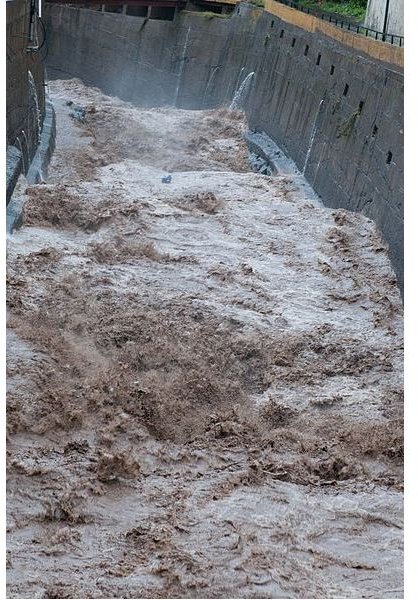The Dangers of Mudslides: How Forest Fires Can Contribute to Flooding & Mudslides
In the wake of the September 18th mudslides in Colorado, many people have come to realize just how important being prepared for this type of natural disaster really is. Many people are simply not aware of how disastrous this can be to not only the land that is involved, but to the local people as well.
Mudslides are usually not major and do not include large areas of land. However, mudslides can be much larger when a forest fire has paved the way, stripping earth of many natural barriers to flooding. It is estimated that 25-50 deaths are reported each year that have been because of the result of a mudslide.
Heavy rain of is necessary for mudslides; typically this will occur when rains are heavier than 1/4 of an inch per hour. However, it may not take as much rain as you think. Colorado’s recent floods happened after only an inch and a half of rain. This was primarily due to dry soil that was unable to absorb the water. The year before, Colorado was plagued with forest fires, causing erosion and creating conditions for flash flooding and mudslides.
Forest Fires Contribute to Severe Mudslides
A forest fire kills all of the surrounding vegetation, destroying plants that hold soil in place. What happens after that is simple. With no plants to hold the soil in place and a heavy rainfall pouring into the ground, gravity takes over and the mud rushes down hillsides and mountains.
Another contributing factor is the oil left behind after the fire. As the fire burns up plants it leaves behind layers of ash and oil. This both prevents the ground from absorbing water and mingles with the floods contributing to more deadly mudslides.
Erosion is a natural occurance that happens when soil or rock is displaced and shifts. However, erosion can be expediated by both human action and natural disasters. In this instance, forest fires destroyed much of the natural barriers and then heavy rainfall took over to cause the next step.
Devastating Aftermath
When severe mudslides do happen they actually have the power to carry away cars, uproot trees or even destroy homes. Some homes are washed away completely due to the intense power. All utilities can also be affected because the power lines or gas lines can be destroyed. This damage will leave roads, trails and even personal property unsafe and not functional, and many roads will be closed.
As the Community in Colorado has recently experienced, this can be a potentially traumatic and life altering experience for everyone involved. Mudslides are extremely disastrous and as history proves, have been some of the worst national disasters.
Being Prepared
For those who live in more mountainous areas, being prepared is your best option. Watch the land around you for changes during rain storms. One way to combat erosion is to plant trees and native plants, expecially on hillsides. If you notice that trees are leaning or small amounts of the ground has washed away after it’s rained, that may indicate that a larger mudslide could possibly happen.
References
- Photo by Andreas Gehret (originally posted to Flickr as DSC_9973) [CC-BY-2.0 (http://creativecommons.org/licenses/by/2.0)], via Wikimedia Commons
- Wildfire: Are you prepared? www.usfa.fema.gov/citizens/home_fire_prev/wildfire
- How Last Year’s Colo. Forest Firest Triggered Deadly Mudslides: http://www.cbsnews.com/8301-18563_162-57597990/how-last-years-colo-forest-fires-trigger-deadly-mudslides
- FEMA - www.fema.gov/disaster/5027
